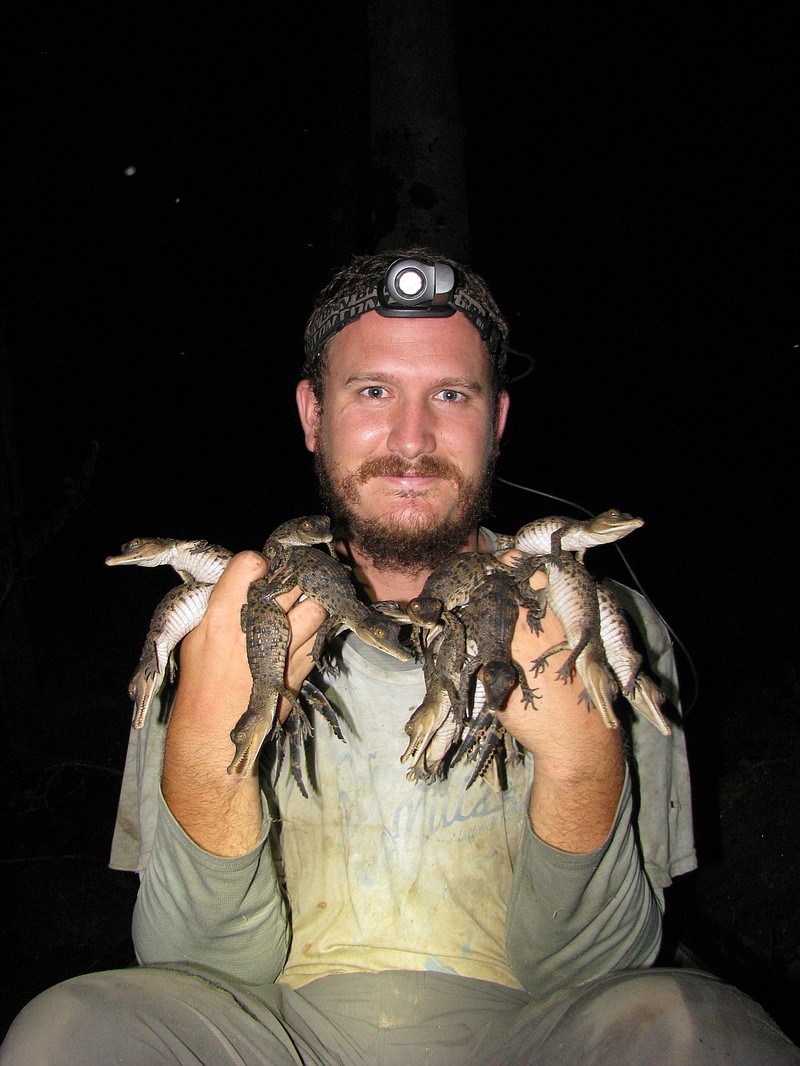MIAMI-For nearly 85 years, crocodile experts knew of just three species in Africa-the dwarf, Nile and slender-snouted.
Researchers, including Matthew Shirley from Florida International University's Tropical Conservation Institute and George Amato of the American Museum of Natural History, have been able recently to define the existence of two Nile and three dwarf species.
And now, while studying the endangered slender-snouted variety, lead researcher Shirley and a team of researchers discovered a new species of the African crocodile, naming it the Central African slender-snouted crocodile.
The discovery, by lead researcher Shirley, who is also a National Geographic Explorer, is detailed in a study published Wednesday in the journal Zootaxa.
The freshwater species, found from Cameroon to Tanzania, has been officially named Mecistops leptorhynchus, National Geographic reported.
Until this discovery, the croc was considered to be the same species as its slender-snouted West African counterpart, the Mecistops cataphractus, and, as such, reduces the total population of the West African species to about 500.
"Recognizing the slender-snouted crocodile as actually comprised of two different species is cause for great conservation concern," Shirley said in FIU News, a release sent by FIU. "We estimate only 10 percent of slender-snouted crocodiles occur in West Africa, effectively diminishing its population by 90 percent. This makes the West African slender-snouted crocodile one of the most critically endangered crocodile species in the world."
Aside from significant genetic differences which first diverged more than eight million years ago in a volcanic region now called Cameroon, the Central African slender-snouted crocs differ in appearance from their West African cousins, Shirley explained in National Geographic. The newly discovered species have softer, smoother skin and smaller, lighter scales. The Central African slender-snout croc also doesn't have bony crests on its skull like the West African species.
The University of Florida's Jennifer Nestler and Kent Vliet, the University of Iowa's Christopher Brochu, and Western Washington University's Amanda Carr, joined Shirley in the study, which took in 14 African countries, and co-wrote the report.
Mecistops leptorhynchus "is the first species since 1935 to go through the full formal descriptive and naming process," according to National Geographic.
The finding is vital for conservation efforts and the effort to protect the crocs from poaching and habitat loss, Shirley said.
"We knew from the dwarf and Nile crocodiles that something was going on, so we decided to see if something similar was happening with the slender-snouted crocodiles," Shirley said in the FIU release. "My objective wasn't to describe a new species. We set out to examine the evidence and better understand these elusive crocodiles."
The research, which has taken years, is ongoing. "These are genuinely critically endangered," Shirley told National Geographic. The crocs could "blink out at any moment."

